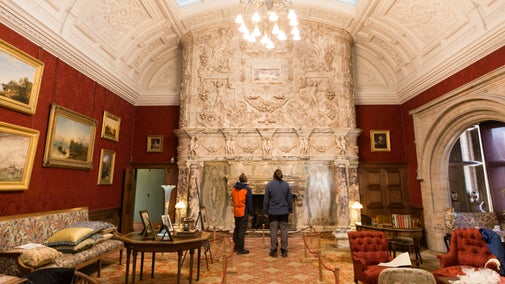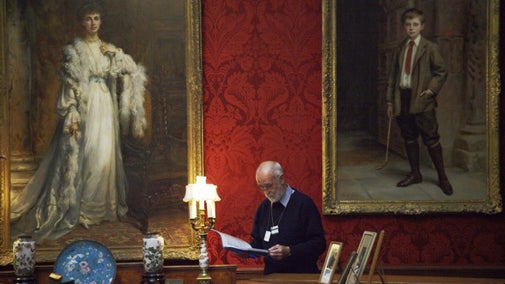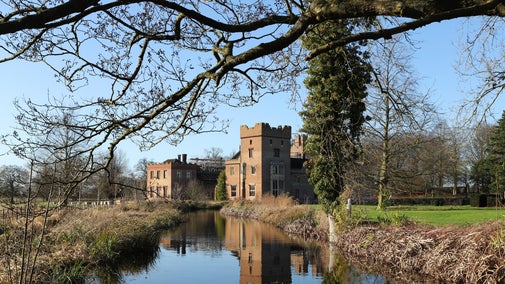Why we needed to work on the carpet
The chenille carpet in the Drawing Room is one of the first carpets in the world to be woven using engineering techniques invented during the Industrial Revolution. This huge Axminster carpet fills the room.
The carpet succumbed to some damage over the years as a result of historic moisture leaks, which caused the wool pile and underlying woven structure to deteriorate. This led to large breaks in the pattern where the weft was broken. If we didn’t work to conserve the carpet, the patches would get much bigger, damaging this historic carpet further.
Usually works to tapestry and carpet would take place at a conservator’s studio. However due to the sheer size of the Drawing Room carpet, conservators from the Rug and Carpet Studio carried out the work on site in June 2021. This meant that visitors were able to catch a glimpse at the vital conservation work taking place.
Making the project possible
The £100,000 conservation and repair of the Drawing Room and its fireplace and carpet has been made possible thanks to generous donations from the Wolfson Foundation, a grant from the government's Culture Recovery Fund administered by Historic England, and support from a private donor.











